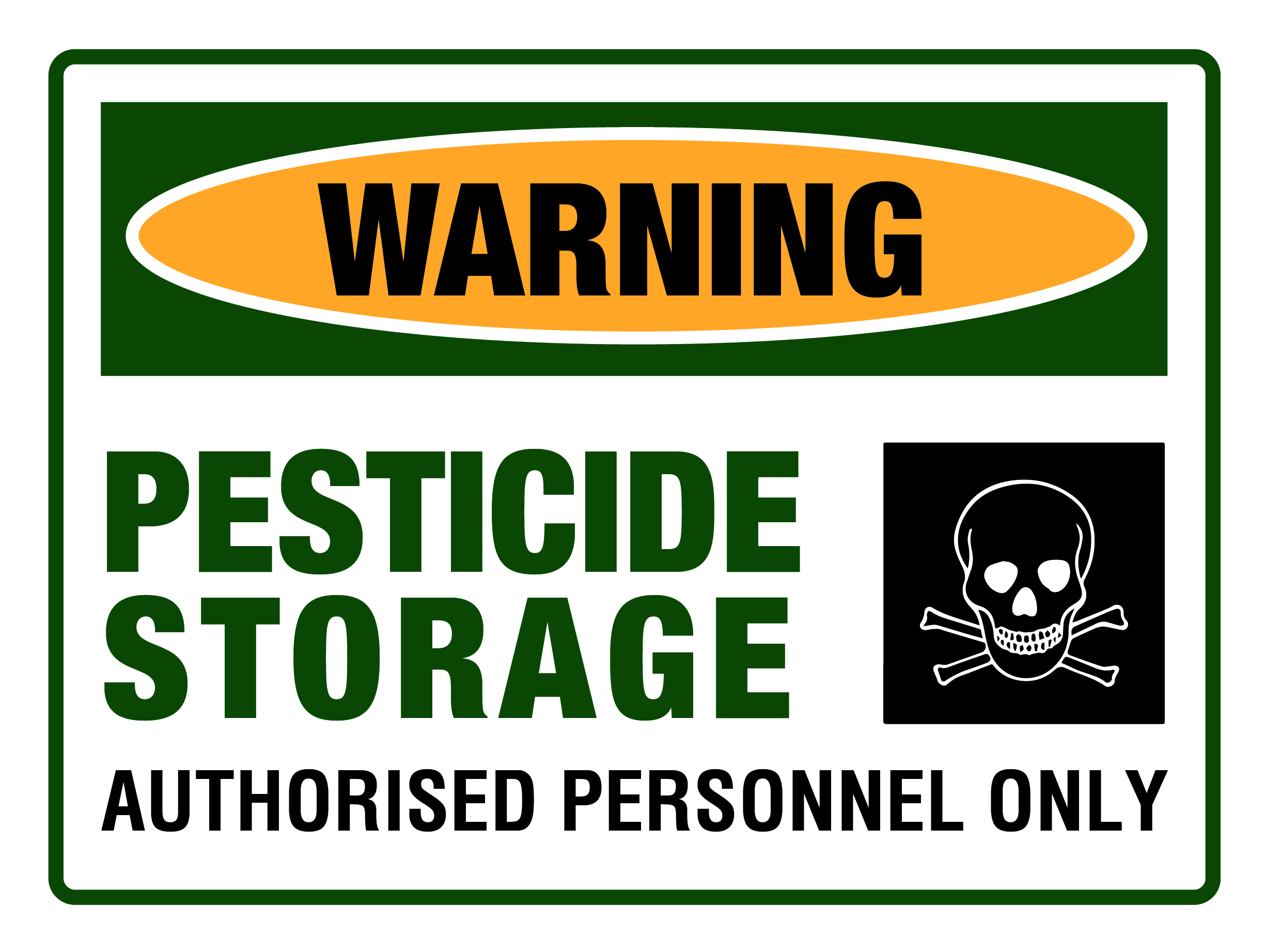Pesticides play a vital role in agriculture, aiding growers in controlling pests, enhancing crop yields, and bolstering food security. However, their usage requires careful attention to minimise adverse effects on the environment, human health, and animal well-being.
Construction of a pesticide storage facility will aid in safeguarding pesticides, preventing accidents that could lead to property or environmental harm, and promote sustainable agricultural practices.
Construction of a pesticide storage facility
It is important to consult the South African National Standard (SANS) and Regulations 10206 before designing, planning or constructing a pesticide storage facility.
- Ensure the storage facility is cool, dry, and protected from unauthorised access.
- Locate the building at least 500 meters away from water sources like irrigation facilities, rivers, dams, and boreholes, and above the 100-year flood line.
- Choose a secure and easily accessible location for dispatch, delivery, and emergency escapes, away from dwellings, clinics, and schools.
- Raise the base of the entrance 200 mm high and 110 mm wide to prevent spills from leaking.
- Construct the building with non-combustible, fire-resistant materials like concrete and brick.
- Install stable, durable, non-porous shelves level to the wall.
- Provide a water supply, basin, and outdoor shower for rinsing off spills and washing hands.
- Ensure adequate ventilation with natural (e.g. airbricks) and mechanical (e.g. extractor fan) systems to prevent the accumulation of fumes.
- Illuminate the storage facility properly.
- Secure the building with steel doors, locks, alarm systems, and burglar bars on windows.
- Ensure that an appropriate fire-retardant system is selected and installed, dependent on the requirement stated on the Safety Data Sheets for the chemicals being stored.
Managing the pesticide storage facility
Maintenance of pesticide storage facilities is as crucial as safe handling and storage of pesticides.
- Always retain original packaging of chemicals for vital handling information and warnings.
- Maintain an up-to-date record of all stock in the facility, whether in printed or electronic form.
- Inspect pesticide containers for damage and leaks upon receipt; reject unlabeled containers.
- Store newly arrived pesticide containers behind older stock to ensure use before expiration.
- Stack pesticide containers on pallets to prevent ground storage and potential environmental harm. Use secure shelving for smaller containers.
- Separate liquid and solid pesticide formulations; position liquid formulations lower on shelves to prevent spills onto solid pesticides.
- Avoid stacking herbicide containers on top of fungicide or insecticide containers to prevent cross-contamination and crop harm.
- Confine highly dangerous chemicals with GHS Acute Toxicity Category 1 classification in a designated labeled cage within the storage facility.
- Prohibit storage of flammable materials, food, feed, fertiliser, or other goods in the pesticide storage facility.
 In facilities where pesticides are stored, ensuring safety measures are in place is crucial. Operators should fully grasp the risks associated with pesticide use and the critical need for wearing appropriate personal protective equipment (PPE). Adhering to specifications outlined in the pesticide’s Safety Data Sheet (SDS) or label is imperative for PPE selection.
In facilities where pesticides are stored, ensuring safety measures are in place is crucial. Operators should fully grasp the risks associated with pesticide use and the critical need for wearing appropriate personal protective equipment (PPE). Adhering to specifications outlined in the pesticide’s Safety Data Sheet (SDS) or label is imperative for PPE selection.
At least one staff member should be equipped with basic first aid training, with clear instructions on first-aid protocols prominently displayed. A readily accessible spill kit should be on-site to swiftly manage any chemical spills. Regular monitoring of the storage facility is also crucial to uphold safety standards.
These proactive measures not only safeguard personnel but also mitigate potential environmental and health hazards associated with pesticide storage and handling.

